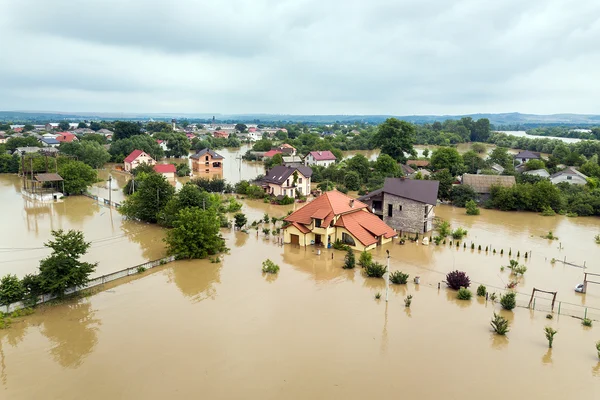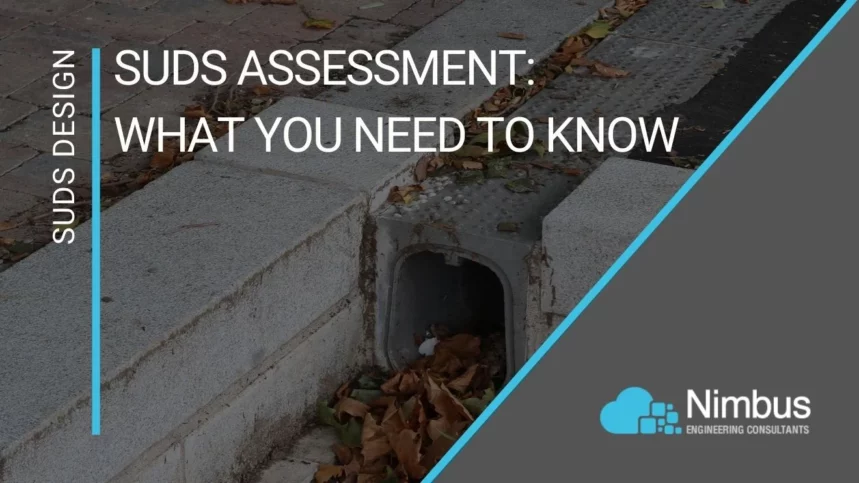If you’re an architect, property developer, builder, planner or landowner, and need to know exactly what a SuDS report is, then this is the blog for you!
In this post, we’ll cover exactly what you need to know about SuDS design and strategy, including the report. Read on to find out more…
What Are SuDS and Why Will I Need A SuDS assessment?
Sustainable urban drainage systems (SuDS) are a way of designing surface water run-off at a development that promotes natural drainage and reduces the risk of overflowing local drainage networks and watercourses e.g. flash flooding.
A SuDS report establishes:
- How much surface water run-off will be produced by the proposed development and the peak flow rate of this, in comparison to the existing surface water run-off rates, where applicable
- Flow pathways and Exceedance Routes
- Infiltration potential (how likely the water will be soaked into the ground and can be treated at the source)
- Outline or detailed SuDS strategy, in line with local and national policies, ensuring that the SuDS management train has been followed
- Calculation of the existing site’s greenfield run-off rate
- Calculation of the existing site’s greenfield run-off rate
- Calculation of soakaway sizes, should infiltration be feasible
- Calculation of the required attenuation, should infiltration not be feasible
- Outline or Detailed Design of SuDS Systems and Surface Water network. The amount of detail provided will vary depending on the size of the project, whether the project is within a critical drainage area and each of the local authority’s requirements
This information allows Civil and Environmental Engineers and Consultants to work out how feasible SuDS is for your site. Importantly, a SuDS report outlines measures you can take so that your drainage meets the requirements set by your national and local planning policy.
This is crucial for achieving planning permission, especially if your development is in a local area at high risk of flooding (Flood Zone 2 or 3) or in a known critical drainage area. Planning authorities want to make sure they do not increase the flood risk at the site or elsewhere, by reducing the burden on the existing pipe networks, especially if they are already close to or at capacity.
It’s important to find this out before you submit a planning application, so you can either give us a call or get in touch with your local planning office.
Why are SuDS Better Than Traditional Drainage?
Well, if it’s not clear by the name (Sustainable Urban Drainage Systems) then simply, SuDS are a more sustainable and ecologically friendly way to manage surface water runoff than traditional piped drainage.
SuDS work by dealing with and treating surface water runoff at the source, if possible, and essentially slowing down the rate of surface water run-off, therefore reducing the risk of overflowing piped networks, and ditches, and ultimately reducing the risk of flooding.
SuDS also improve water quality by reducing pollution and also protecting natural waterways and local habitats by reducing water quantity. They enhance urban spaces by encouraging vegetation and wildlife and therefore increase biodiversity and amenity value.
What Does a SuDS Assessment Cover?
The key things that SuDS reports cover are:
- How much surface water run-off will be produced by the proposed development and the peak flow rate of this, in comparison to the existing surface water run-off rates, where applicable
- Flow pathways and Exceedance Routes
- Infiltration potential (how likely the water will be soaked into the ground and can be treated at the source)
- Outline or detailed SuDS strategy, in line with local and national policies, ensuring that the SuDS management train has been followed. The amount of detail provided will vary depending on each of the Lead Local Flood Authorities’ requirements
- Calculation of the existing site’s greenfield run-off rate
- Calculation of soakaway sizes, should infiltration be feasible
- Calculation of the required attenuation, should infiltration not be feasible
- Outline or Detailed Design of SuDS Systems and Surface Water network design. The amount of detail provided will vary depending on each of the Lead Local Flood Authorities’ requirements

Will I Need Other Drainage Reports Too?
Depending on the size, location and type of your development, you may need a second-stage report, which is sometimes requested once the SuDS strategy has been accepted in principle or conditioned. This is known as ‘Detailed SuDS and Surface Water Network Design’. It provides comprehensive layouts, long sections and construction details.
A detailed drainage design models the drainage network, however, not all planning applications will require a Detailed Drainage Design and, depending on the size and nature of the development, this may be requested as a planning condition that requires discharging, which we can produce in conjunction with design drawings for Building Regulations approval, as well as for construction.
Key Recommendations Concerning SuDS assessments
Quite often, a SuDS report becomes a last-minute consideration – which will lead to costly outcomes for you or your client. These costs can be mitigated if you involve a SuDS report specialist from the outset.
The SuDS assessment is usually completed as a desktop study, so you won’t need a site visit, however, should you require one of our engineers to come out on-site, we can arrange this, and if a BRE365 Percolation test is required, we can also arrange for one of our engineers to carry this out.
With a SuDS assessment, you can achieve a sustainable drainage strategy, with the required level of detail, to minimise surface water run-off from your proposed development, helping you achieve planning application approval.
Key Recommendations Concerning SuDS assessments
If you need a SuDS report, don’t hesitate to get in touch with an expert here at Nimbus Engineering. Due to our close relationship with the Lead Local Flood Authorities (LLFA), you can be sure that you get the right solution for your project, no matter what size and wherever it may be.
As Civil Engineering and Environmental Consultants, we can give you early-stage advice for sustainable drainage designs to integrate into your development, allowing you to work around any constraints or risks, in a natural and ecological way, which is also cost-effective and feasible to construct.
Many of our competitors are environmental consultants only, and this means that they do not have the construction stage design experience in order to take their SuDS proposals and solution to a stage where the client can build from this.
Contact us today to find out more.


